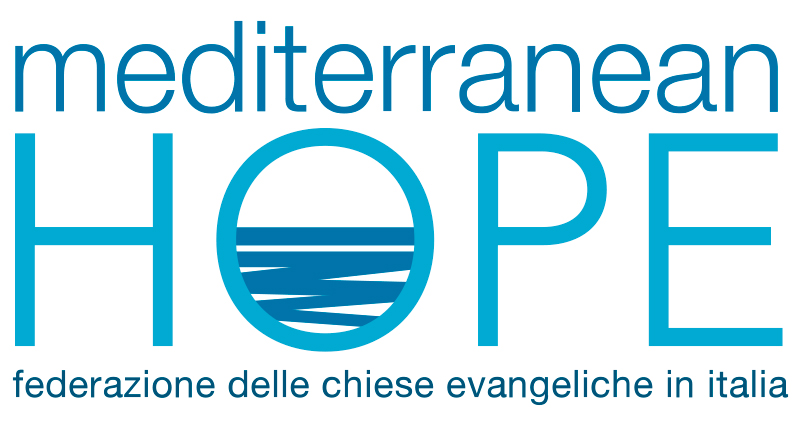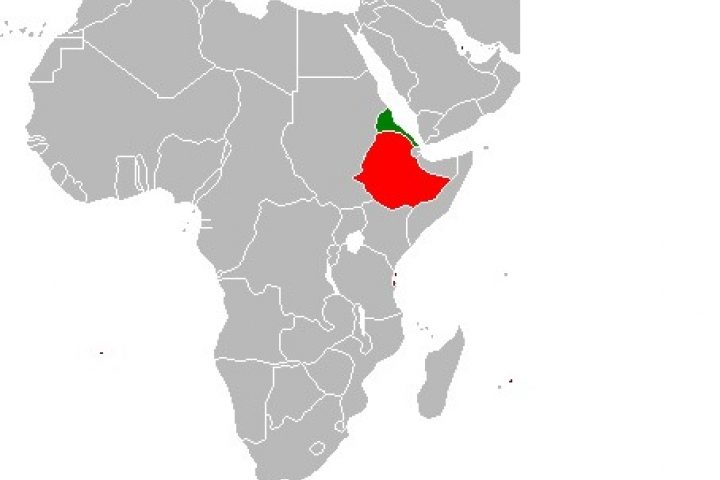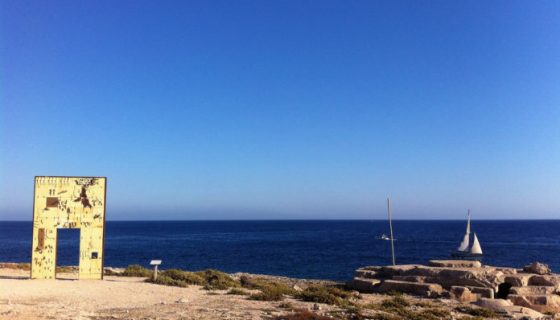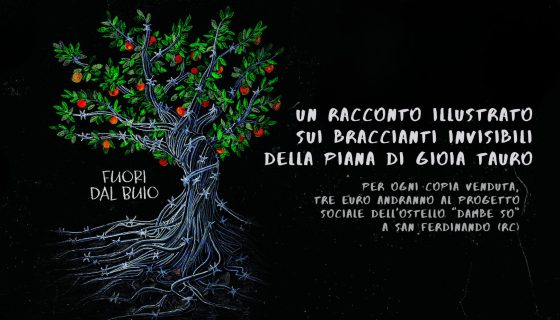- Mediterranean Hope - Federazione delle chiese evangeliche in Italia
- mh@fcei.it
United although divided. The long complex history of ethio-eritrean area and its migration flows
Eritrea is a small country on the Red Sea. It has an estimated population of 4-5 million people. Eritrea sits in the Northern part of the Horn of Africa and is bordered by Sudan to the West, Djibouti to the Southeast and Ethiopia to the South, from which is separated by the river Mahred, the national border since 1993. Eritrea’s ethnic groups are: Tigrinya (52%), Tigre (18%), Afar (8%), Kunama 4%. The remaining 18% comprises: Nara, Saho, Beja, Bilen. Ethiopia, instead, is a larger country. It has 90 million inhabitants and in 1991, it became a federal Republic on an ethnic basis. This region is, in fact, a mix of different ethnic groups, among which the most important from a quantitative point of view are: Tigrinya, Amhara, Oromo, Sidamo and Afar.
 Although Eritrea and Ethiopia are now two independent countries, the two nations are bound together by shared history politically, linguistically, religiously and culturally. In fact, what is today called Eritrea is actually the result of the Italian colonialism. On January 1st 1890, Italy declares Eritrea “colonia primigenia” (original colony). It was made up of a group of provinces, very different culturally, linguistically, and ethnically. Concerning languages, culture and religion the history of Eritrean Plateau’s Tigrinya groups has a stronger bond with the groups of Tigray Tableland and Amhara from Ethiopia, rather than the Kunama from Nile region or the Muslims of the lowland, and the nomadic group, which entered the territory of the fledgling colony of Eritrea. The groups of the central tablelands were historically linked to Ethiopia, the most ancient Country in Africa whose name has ancient Greek origins and has been used since the establishment of the Reign of Axum (1) in the X century BC (conventional date). It was a very complex political entity, whose main characteristic is perhaps its connection with the Christian religion: Ethiopia is the only country in sub-Saharan to know Christianity well before the European colonisation that exported Christianity to the other African countries. Christianity spread, in fact, among the populations of the tablelands – the Tigrinė and the Amhara – from the fourth century AD, when the rulers of Axum converted to it. Thanks to this deep bond to Christianity, Ethiopia earned the label of “Christian Empire”. However, it would be wrong to consider Ethiopia as a country with a monolithic religious situation, like the European countries of the Middle Ages. The composition of the area is given by a mix of different traditions and knowledge, as well as the significant presence of Islam that, in Ethiopia, has spread since the first Muslim expansion and today represents about 34% of the population in Ethiopia and 40-45% in Eritrea. Christianity in Ethiopia is based on Monophysitism which was condemned by the Council of Chalcedony in 451. According to this doctrine, Christ has a substantial unity of two natures – divine and human. Moreover, the divine nature would have absorbed the human one with the Incarnation in a substantial unity. Although the Ethiopian Orthodox Church remains formally linked to the Egyptian Orthodox one until 1959 (the year in which Haile Selassie I decided for its nationalisation), its liturgical theological and therapeutic tradition has become strongly indigenous, giving rise to a local Christian tradition. In addition to the corpus of practices of the Church, from a political perspective its distinctiveness is the strong connection to the political power in Ethiopia. Not only does the introduction of Christianity is due to the rulers of Axum, but the entire spread of the Christian faith in the area has been strongly fuelled by various emperors who have delegated administrative, fiscal and management functions to the Orthodox Church. In fact, amidst the many roles that the Church would carry out later on, the structuring of the land ownership and its relevant distribution was of considerable importance. Italian colonialism had not broken the link between the population of Eritrea and Ethiopia by maintaining easy to cross borders. During Post-World War II, the history of the two countries intertwined again when Italy lost its colonies in the Horn of Africa. The question of Eritrea was suspended and the former Italian colony was entrusted to the British military protectorate. On December 2nd 1950, the Resolution 390A of the United Nations decided for the annexation of Eritrea as an autonomous region to the fledgling Federal Government of Ethiopia. Thus, Eritrea would have kept its autonomy concerning economic and internal affairs and in the field of education. This experience began in 1952 and ended less than ten years later. As in 1961, Haile Selassie breached these autonomies, by prohibiting the use of the flag and the Eritrea’s Tigrinya language at school. Because of these events and the development of a nationalist sentiment which arose during the final stages of the Italian colonialism, in 1961 the first Eritrean Liberation Front was established in Cairo by Muslims in exile. Actually, this front would keep inside the divisions that characterised the Islamic clans of the lowland (metahit = lowland). In 1960, in fact, the movement founded by Idris Muhammad Adam was established. Later on, also Wolbeab Woldemariam, a Christian Orthodox and a nationalist from the very beginning, joined the organisation. The 1961 is considered the turning point as on September 11 the first guerrilla attack took place. Even now in Eritrea 09/11 is celebrated as being the beginning of the new year in the Ethiopian calendar and as the mgwegemar bretawi qalsi the beginning of the Eritrean fight. In 1974, the government of Haile Selassie, countered by the ELF (Eritrean Liberation Front), was overthrown by a military coup. This event brought to power the pro-Soviet communist movement of the Derg, led by Mengistu Haile Mariam. In the same year, the Eritrean People’s Liberation Front (EPLF) was born from a breakup inside the Eritrean Liberation Front. This event shifted the Eritrean struggle towards a more markedly Marxist-Leninist direction, with a strong influence of the Chinese Maoism (many of the future leaders of the movement, including the leader and current President of Eritrea Issaias Afewerki, studied in China). Thus, the Eritrean liberation struggle assumed anti-imperialist and anti-colonial traits. In the eighties of the twentieth century, the two parties were involved in a civil war that saw them opposed. The Eritrean People’s Liberation Front joined forces with the The Tigrayan People’s Liberation Front (TPLF) and defeated, at first, the ELF, and, later, the Ethiopian government of the Derg. On May 24th, 1991, the troops of the EPLF triumphantly entered Asmara, while the troops of the TPLF occupied Addis Ababa. Thus, a new phase began for the history of the two countries. In fact, there is a separation sanctioned by the Eritrean referendum of 1993, which was followed by a period of relative peace, during which Ethiopia, landlocked, also used the sea port of Assab in Eritrea. In Ethiopia, the government was formed by former TPLF guerrilla members, while fighters from the EPLF took control in Asmara. in 1994, they formed a single party at the head of the country. In the occasion of a congress in Nakfa (symbol of the martyrs of the independence), the EPLF changed its name and became the People’s Front for Democracy and Justice. Again, the guide of the party was entrusted to Issaias Afewerki. In 1997, a Constitution was drafted with the participation of a representative of the diaspora communities , but actually, it has never been applied in Eritrea. In 1998, in fact, in the area around the small village of Badme, a conflict on boundaries erupted, resulting in a war with Ethiopia. It was one of the most terrible conflicts in the contemporary Africa, with hundreds of thousands of deaths on both sides. That conflict was also a watershed in the recent history of the country and in general for the Horn of Africa. In fact, from those events a strong dictatorial shift took place in Eritrea. In fact, from those events a strong dictatorial shift took place in Eritrea. Not only has the war meant tens of thousands of victims, terror and deportations (after independence many Ethiopians had been expelled from the country, with the war, and this process has exacerbated and also many Eritreans are expelled from Ethiopia), but also created the current situation. At the end of the war, the Army has not been disbanded and all citizens aged 18 to 50 years (40 for women) have been included in the Eritrean Defense Force and the National Service, officially for the fear of a new aggression by Ethiopia. Their salary is low ($ 25 dollars/month) and any kind of dissent, genuine or alleged, is punished by physical punishment, torture, mutilation, death and detention (the prisons of Eritrea are notorious: underground container in Eritrean desert at unbearable climatic conditions). In 2001, eleven ministers of the cabinet were arrested and imprisoned without formal charges and in 2002, all the newspapers not related to the party were closed and all the Protestant churches, Pentecostal, as well as the halls of Jehovah’s Witnesses, were banned. In 2006, the Orthodox Patriarch Antonios was arrested for criticising the government intervention in the affairs of the church. Now, emigration is the most important phenomenon that affects Eritrea. Fleeing from the country is the only way to escape the military service and the persecution. According to UNHCR, since 1999 the number of Eritrean refugees has swollen to 300,000. It is an important data compared with the Eritrean population, but it assumes further significance when we take into account those who have fled and are not yet registered in any other country and those who died during the dangerous journey. Those who decide to take this path, illegally cross, the border to Sudan or Ethiopia, beginning in this way their route to Europe or sometimes Israel. From there, in fact, they try to cross the great Sahara desert to reach Libya and then they sail towards Lampedusa by boarding the so-called “carrette del mare” (old and unsafe boat crafts). The simple and brief description of this journey should not be misleading. It is not an easy route, but a very complex, expensive, full of barriers, and, above all, very dangerous one. individuals cross the desert risking their own life, as the beautiful reportage from Fabrizio Gatti, Bilal, showed in 2007. Life in Libya is marked by arbitrary arrests, violence and theft. Then, there is the sea trip to the Italian coast which is unfortunately now famous for the amount of deaths and for the enormous suffering associated with it. In Italy, the Eritreans can make their request for asylum – almost always granted to them, because of the well known conditions of life in Eritrea – either in the form of refugee status, or, more often, in the form of subsidiary protection and
Although Eritrea and Ethiopia are now two independent countries, the two nations are bound together by shared history politically, linguistically, religiously and culturally. In fact, what is today called Eritrea is actually the result of the Italian colonialism. On January 1st 1890, Italy declares Eritrea “colonia primigenia” (original colony). It was made up of a group of provinces, very different culturally, linguistically, and ethnically. Concerning languages, culture and religion the history of Eritrean Plateau’s Tigrinya groups has a stronger bond with the groups of Tigray Tableland and Amhara from Ethiopia, rather than the Kunama from Nile region or the Muslims of the lowland, and the nomadic group, which entered the territory of the fledgling colony of Eritrea. The groups of the central tablelands were historically linked to Ethiopia, the most ancient Country in Africa whose name has ancient Greek origins and has been used since the establishment of the Reign of Axum (1) in the X century BC (conventional date). It was a very complex political entity, whose main characteristic is perhaps its connection with the Christian religion: Ethiopia is the only country in sub-Saharan to know Christianity well before the European colonisation that exported Christianity to the other African countries. Christianity spread, in fact, among the populations of the tablelands – the Tigrinė and the Amhara – from the fourth century AD, when the rulers of Axum converted to it. Thanks to this deep bond to Christianity, Ethiopia earned the label of “Christian Empire”. However, it would be wrong to consider Ethiopia as a country with a monolithic religious situation, like the European countries of the Middle Ages. The composition of the area is given by a mix of different traditions and knowledge, as well as the significant presence of Islam that, in Ethiopia, has spread since the first Muslim expansion and today represents about 34% of the population in Ethiopia and 40-45% in Eritrea. Christianity in Ethiopia is based on Monophysitism which was condemned by the Council of Chalcedony in 451. According to this doctrine, Christ has a substantial unity of two natures – divine and human. Moreover, the divine nature would have absorbed the human one with the Incarnation in a substantial unity. Although the Ethiopian Orthodox Church remains formally linked to the Egyptian Orthodox one until 1959 (the year in which Haile Selassie I decided for its nationalisation), its liturgical theological and therapeutic tradition has become strongly indigenous, giving rise to a local Christian tradition. In addition to the corpus of practices of the Church, from a political perspective its distinctiveness is the strong connection to the political power in Ethiopia. Not only does the introduction of Christianity is due to the rulers of Axum, but the entire spread of the Christian faith in the area has been strongly fuelled by various emperors who have delegated administrative, fiscal and management functions to the Orthodox Church. In fact, amidst the many roles that the Church would carry out later on, the structuring of the land ownership and its relevant distribution was of considerable importance. Italian colonialism had not broken the link between the population of Eritrea and Ethiopia by maintaining easy to cross borders. During Post-World War II, the history of the two countries intertwined again when Italy lost its colonies in the Horn of Africa. The question of Eritrea was suspended and the former Italian colony was entrusted to the British military protectorate. On December 2nd 1950, the Resolution 390A of the United Nations decided for the annexation of Eritrea as an autonomous region to the fledgling Federal Government of Ethiopia. Thus, Eritrea would have kept its autonomy concerning economic and internal affairs and in the field of education. This experience began in 1952 and ended less than ten years later. As in 1961, Haile Selassie breached these autonomies, by prohibiting the use of the flag and the Eritrea’s Tigrinya language at school. Because of these events and the development of a nationalist sentiment which arose during the final stages of the Italian colonialism, in 1961 the first Eritrean Liberation Front was established in Cairo by Muslims in exile. Actually, this front would keep inside the divisions that characterised the Islamic clans of the lowland (metahit = lowland). In 1960, in fact, the movement founded by Idris Muhammad Adam was established. Later on, also Wolbeab Woldemariam, a Christian Orthodox and a nationalist from the very beginning, joined the organisation. The 1961 is considered the turning point as on September 11 the first guerrilla attack took place. Even now in Eritrea 09/11 is celebrated as being the beginning of the new year in the Ethiopian calendar and as the mgwegemar bretawi qalsi the beginning of the Eritrean fight. In 1974, the government of Haile Selassie, countered by the ELF (Eritrean Liberation Front), was overthrown by a military coup. This event brought to power the pro-Soviet communist movement of the Derg, led by Mengistu Haile Mariam. In the same year, the Eritrean People’s Liberation Front (EPLF) was born from a breakup inside the Eritrean Liberation Front. This event shifted the Eritrean struggle towards a more markedly Marxist-Leninist direction, with a strong influence of the Chinese Maoism (many of the future leaders of the movement, including the leader and current President of Eritrea Issaias Afewerki, studied in China). Thus, the Eritrean liberation struggle assumed anti-imperialist and anti-colonial traits. In the eighties of the twentieth century, the two parties were involved in a civil war that saw them opposed. The Eritrean People’s Liberation Front joined forces with the The Tigrayan People’s Liberation Front (TPLF) and defeated, at first, the ELF, and, later, the Ethiopian government of the Derg. On May 24th, 1991, the troops of the EPLF triumphantly entered Asmara, while the troops of the TPLF occupied Addis Ababa. Thus, a new phase began for the history of the two countries. In fact, there is a separation sanctioned by the Eritrean referendum of 1993, which was followed by a period of relative peace, during which Ethiopia, landlocked, also used the sea port of Assab in Eritrea. In Ethiopia, the government was formed by former TPLF guerrilla members, while fighters from the EPLF took control in Asmara. in 1994, they formed a single party at the head of the country. In the occasion of a congress in Nakfa (symbol of the martyrs of the independence), the EPLF changed its name and became the People’s Front for Democracy and Justice. Again, the guide of the party was entrusted to Issaias Afewerki. In 1997, a Constitution was drafted with the participation of a representative of the diaspora communities , but actually, it has never been applied in Eritrea. In 1998, in fact, in the area around the small village of Badme, a conflict on boundaries erupted, resulting in a war with Ethiopia. It was one of the most terrible conflicts in the contemporary Africa, with hundreds of thousands of deaths on both sides. That conflict was also a watershed in the recent history of the country and in general for the Horn of Africa. In fact, from those events a strong dictatorial shift took place in Eritrea. In fact, from those events a strong dictatorial shift took place in Eritrea. Not only has the war meant tens of thousands of victims, terror and deportations (after independence many Ethiopians had been expelled from the country, with the war, and this process has exacerbated and also many Eritreans are expelled from Ethiopia), but also created the current situation. At the end of the war, the Army has not been disbanded and all citizens aged 18 to 50 years (40 for women) have been included in the Eritrean Defense Force and the National Service, officially for the fear of a new aggression by Ethiopia. Their salary is low ($ 25 dollars/month) and any kind of dissent, genuine or alleged, is punished by physical punishment, torture, mutilation, death and detention (the prisons of Eritrea are notorious: underground container in Eritrean desert at unbearable climatic conditions). In 2001, eleven ministers of the cabinet were arrested and imprisoned without formal charges and in 2002, all the newspapers not related to the party were closed and all the Protestant churches, Pentecostal, as well as the halls of Jehovah’s Witnesses, were banned. In 2006, the Orthodox Patriarch Antonios was arrested for criticising the government intervention in the affairs of the church. Now, emigration is the most important phenomenon that affects Eritrea. Fleeing from the country is the only way to escape the military service and the persecution. According to UNHCR, since 1999 the number of Eritrean refugees has swollen to 300,000. It is an important data compared with the Eritrean population, but it assumes further significance when we take into account those who have fled and are not yet registered in any other country and those who died during the dangerous journey. Those who decide to take this path, illegally cross, the border to Sudan or Ethiopia, beginning in this way their route to Europe or sometimes Israel. From there, in fact, they try to cross the great Sahara desert to reach Libya and then they sail towards Lampedusa by boarding the so-called “carrette del mare” (old and unsafe boat crafts). The simple and brief description of this journey should not be misleading. It is not an easy route, but a very complex, expensive, full of barriers, and, above all, very dangerous one. individuals cross the desert risking their own life, as the beautiful reportage from Fabrizio Gatti, Bilal, showed in 2007. Life in Libya is marked by arbitrary arrests, violence and theft. Then, there is the sea trip to the Italian coast which is unfortunately now famous for the amount of deaths and for the enormous suffering associated with it. In Italy, the Eritreans can make their request for asylum – almost always granted to them, because of the well known conditions of life in Eritrea – either in the form of refugee status, or, more often, in the form of subsidiary protection and  humanitarian protection. Since 2007, there are lesser forms of protection in force. Figure 2: main routes for Eritreans As can be seen from the Figure 2, the main routes follow the path described above. The peculiarity is that Italy, although being the first European destination, it is considered as a country of transit to reach Northern European nations and the UK that offer more job opportunities and inclusion. Another route, less explored, starts from Europe and goes to Mexico. From there, migrants try to enter United States. Ethiopians often enter this migration flow, when they decide to emigrate either for discrimination related issues at the expenses of some ethnic groups, or, more often, driven by the idea that the West is a prosperous place, full of opportunities, where it is easy to make money. A significant part of this immigration flow is from the northern region of Tigray, which, as explained above, is deeply bound to Eritrea. Thanks to linguistic and religious affinities, Tigrinyas from Ethiopia can enter the Eritrean immigration flows by often recollecting old kinships. 1) The capital of the kingdom was the namesake city of Axum, in the Tigray – northern Ethiopia. *Operator for Mediterranean Hope, PhD student in anthropology at Università Sapienza of Rome and member of the research team of the Italian Ethnological Mission in tigray-ethiopia
humanitarian protection. Since 2007, there are lesser forms of protection in force. Figure 2: main routes for Eritreans As can be seen from the Figure 2, the main routes follow the path described above. The peculiarity is that Italy, although being the first European destination, it is considered as a country of transit to reach Northern European nations and the UK that offer more job opportunities and inclusion. Another route, less explored, starts from Europe and goes to Mexico. From there, migrants try to enter United States. Ethiopians often enter this migration flow, when they decide to emigrate either for discrimination related issues at the expenses of some ethnic groups, or, more often, driven by the idea that the West is a prosperous place, full of opportunities, where it is easy to make money. A significant part of this immigration flow is from the northern region of Tigray, which, as explained above, is deeply bound to Eritrea. Thanks to linguistic and religious affinities, Tigrinyas from Ethiopia can enter the Eritrean immigration flows by often recollecting old kinships. 1) The capital of the kingdom was the namesake city of Axum, in the Tigray – northern Ethiopia. *Operator for Mediterranean Hope, PhD student in anthropology at Università Sapienza of Rome and member of the research team of the Italian Ethnological Mission in tigray-ethiopia





